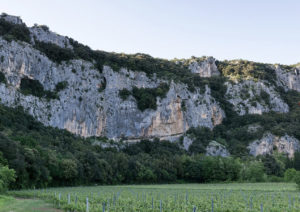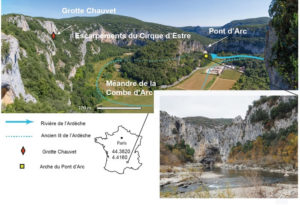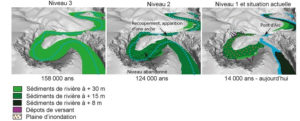
CNRS Presse—The Chauvet Cave, which lies by the entrance to the Gorges of the Ardèche, is home to the world’s oldest cave paintings, dating back 36,000 years. Their state of preservation and aesthetic qualities earned them a spot on the World Heritage List in 2014, 20 years after their discovery. The location of the cavern – surrounded by a remarkable landscape, next to the Pont d’Arc natural archway – raises the question of whether the people who executed these artworks looked and walked out upon the same landscape as today. Did they see the same natural archway? Scientists from the CNRS, Université Savoie Mont Blanc, and the Muséum National d’Histoire Naturelle1 now know the answer. By studying the landform of the area and making novel use of applied mathematics to date sand transported by the Ardèche River, they determined that the Pont d’Arc was formed about 124,000 years ago. This study published on April 26 in Scientific reports these past communities were therefore familiar with the same landmarks we know today: the gorge entrance, a natural archway, and a ledge leading directly to the cave entrance, which was then wide open.
__________________________

The Cirque d’Estre shapes the natural setting of the Chauvet Cave and the Pont d’Arc. The upper photograph shows the Combe d’Arc, an old meander later cutoff by the Ardèche River. © Jean-Jacques Delannoy and Stéphane Jaillet
__________________________

Reconstructing the history of the Combe d’Arc landscape. The Combe d’Arc was greatly impacted by the gradual entrenchment of the Ardèche River. © Kim Génuite
__________________________
Article Source: A CNRS news release. Elie Stecyna, CNRS press officer
Above, Top Left: View toward Chauvet showing landscape around the cave location. Thilo Parg, Lizenz CC-BY-SA-4.0 Wikimedia Commons
__________________________
Advertisement





